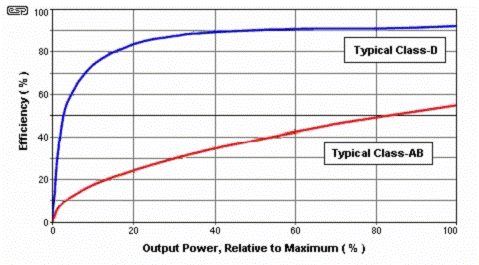The current trends in social-electronic integration are indicative of a level of “Ambient Computing”. That is, providing users with electronic services independent of their physical location or condition. Examples of this new form of integration can be seen in everything from cell-phones, portable music players, portable gaming devices, laptops, palmtops, and most recently smart-phones. For this entire generation of new devices, one of the most critical design factors to emerge is that of power efficiency. Users are demanding smaller and lighter devices, more features and more powerful processing power, and longer battery times. Unfortunately, improvements in the power density of consumer level batteries are significantly lacking behind user demands, bringing about the increasingly urgent need for exceptionally energy-efficient technologies upon which the next generation of devices can be built.
For the scope of this semester’s IPRO, we will focus on the amplification stage of mobile audio applications. Final Signal amplification for mobile audio devices can reasonably be in the range of several watts, and can make up significant portions of a devices power budget. Furthermore, traditional amplifiers are limited by a tradeoff between low efficiencies and audio distortion. Lower efficiencies further increase power consumption, and require additional hardware to dissipate waste heat, while higher distortion levels are considered unacceptable by many users.
Amplifiers are classified into letter grades based on what parts of the original waveform are amplified. In most audio applications class B, AB amplifiers are used. However, an alternative amplifier design, class D amplifiers are beginning to emerge as an ideal solution to the tradeoffs of traditional amplifiers. Since the traditional amplifiers have output devices that conduct even when “off.” This dissipates power, which means there is zero percent efficiency during this time. This lowers the maximum efficiency of these amplifiers.
Class D amplifiers operate on analog principles. They represent the maximum theoretical efficiency of any audio amplifier, with a minimum of audio distortion. Their high efficiency is achieved because they require less power from the power supply, and this requires smaller heat sink. Also, class D amplifiers have high power levels and small design. They have two output states “on” and “off” instead of one. In the “on” state, current flows through the device when no drain to source voltage is present. This means that the power dissipation is theoretically zero. In the “off” state, current through the device is zero.

Figure 2.1: Efficiency Comparison for Class AB and Class D Amplifier
Historically, the usage of class D amplifiers has been limited by their complexity compared to other amplifier types, and their sensitivity to Electromagnetic noise. However, modern improvements and design methods are making class D amplifiers a more attractive alternative.
Both the benefits and complexity of class D amplifiers stem from their unique design. Traditional amplifiers function by selecting portions of the input waveform, and amplifying them with transistors or vacuum tubes before outputting the new waveform. Class D amplifiers however, function by re-encoding the entire input waveform into a new signal type, which is then amplified, and finally de-encoded by means of a passive filter. Most class D implementations utilize a high frequency pulse-width modulation for their encoding, which allows for higher efficiency in amplification as the transistor/vacuum tube is only ever completely “on” or completely “off”, and still impose only an absolute minimum of audio distortion.
This semester our focus will be twofold. Firstly, our previous goals of attaining higher efficiency using various techniques such as Dynamic Power and probably heat sinks. Also, we will be trying to increase sound quality for our sponsors, McDonalds, by using noise reduction techniques. To be effective in this endeavor, we will also make a field trip to understand the setup and constraints of their current drive-through system. |